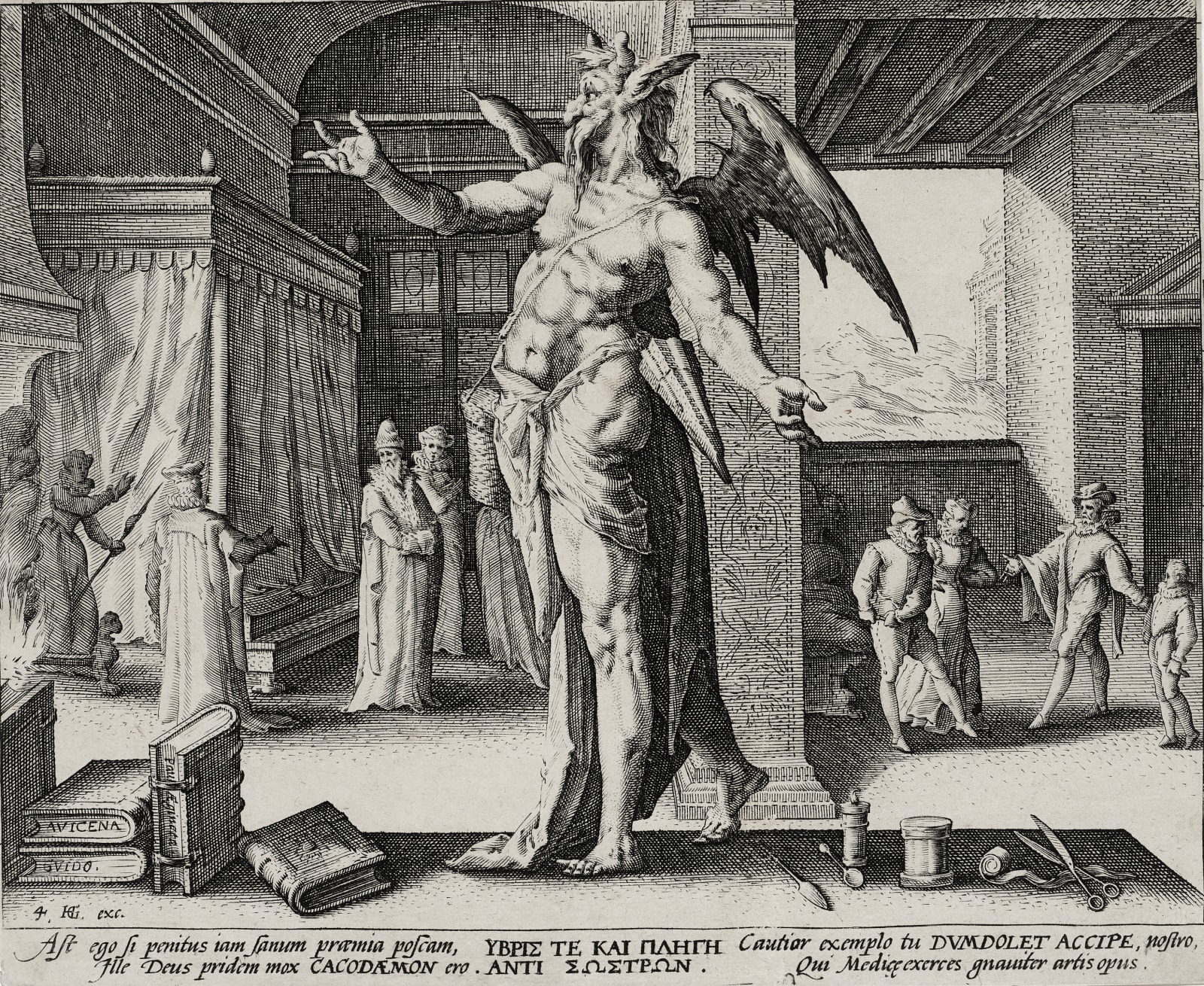After Hendrick Goltzius (1558-1617)
Hendrick Goltzius had a “compulsion to make ostentatious display of his virtuosity,” a scholar once wrote. If Goltzius showed off, who can blame him? After all, he had the use of only one hand: his right hand had been maimed in a fire, and he was completely unable to extend his fingers. Goltzius arrived in Haarlem at age nineteen. Two years later, he married a rich widow who helped him set up a workshop. He left Haarlem only once to visit Germany and Italy in 1590 to 1591, bringing home a more classical, naturalistic art that shifted Dutch artists away from the eccentric Mannerist style. His panoramic, open-air drawings of Holland's scenery, among the earliest Dutch landscapes, paving the way for younger artists like Rembrandt.
Famous for his printmaking, Goltzius worked in secret and never showed an unfinished work. By 1600 he had abandoned the burin for the brush. His eyesight was failing due to years of painstaking work with engraving tools, and, like his contemporaries, he believed painting to be superior to printmaking. He died in 1617, never achieving the same quality on panel as he had on paper.
Although we do not know the name of the print maker, it is executed after a design by Goltzius. And the same doctor who had been given the name of God is considered a devil after the cure is complete and he demands to be paid. A demonic figure with wings, whole-length; beyond the doctor gestures towards the old man who is fully recovered and stands beside his four-poster bed; at right, the doctor confronts his cured patient and holds out his hand. The polarized perception of the medical profession certainly rings through today.
Provenance
Hill-Stone, South Dartmouth, MA, 1994Private collection, New York
Literature
Bartsch III.99.15Hollstein 316 (E. van Panderen)
New Hollstein 709.I (Hendrick Goltzius; prints after inventions by Goltzius)
